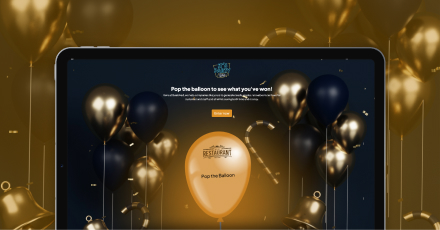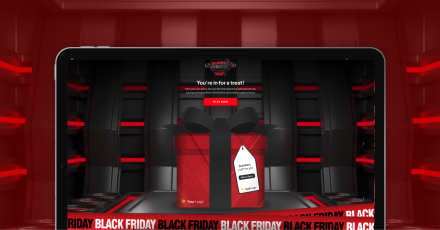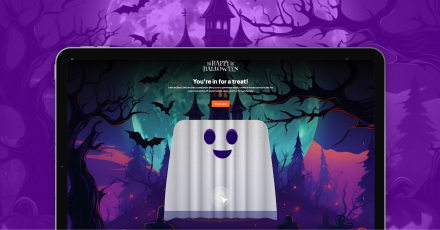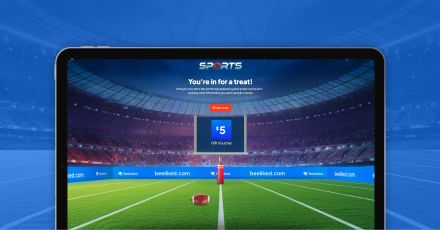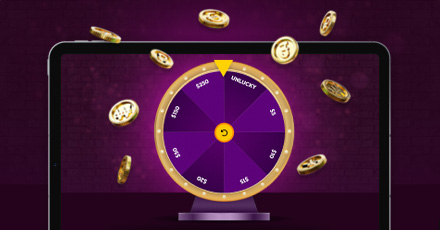Building loyal and engaged clients is crucial for sustaining long-term business success. It requires forging meaningful relationships that foster trust and deepen customer loyalty. When clients feel genuinely valued, they are more likely to remain committed.
However, standing out amidst competitors and keeping clients engaged throughout the year can be a daunting task. The solution? A well-crafted strategy that keeps your clients engaged all year long. This strategy not only keeps them engaged but also empowers them, making them feel like an integral part of your brand’s journey. In this article, we’ll dive into how using targeted incentives that resonate with your client’s needs and desires can help you build a lasting connection that drives ongoing loyalty and sets your brand apart.
Understanding Incentive Marketing

Incentive marketing is a strategy that uses rewards to encourage specific actions from clients, such as making a purchase, referring a friend, or interacting with your content. These rewards can range from discounts and gift cards to exclusive experiences and recognition.
The power of incentive marketing lies in its ability to tap into basic human motivation. People are naturally drawn to the prospect of gaining something, and incentives provide that extra push to take action. When implemented as part of a year-round engagement strategy, incentive marketing creates a continuous cycle of interaction that keeps your brand relevant and engaging.
The Foundation for Year-Round Engagement

Crafting a year-round client engagement strategy requires more than occasional check-ins; it demands a thoughtful, ongoing approach. Incentive marketing seamlessly complements key engagement components by introducing an extra layer of motivation. When clients see tangible benefits from engaging with your brand, their interest and loyalty are naturally heightened. This personal touch makes them feel valued and appreciated.
Key Components of Engagement:
- Personalization: This goes beyond using a client’s name in communications. It involves crafting offers, messages, and experiences that resonate with each client’s individual needs, preferences, and behaviors of each client. When clients feel that the brand understands them on a personal level, it enhances their emotional connection and loyalty.
- Consistency: Regular, meaningful interactions are crucial. These can be in the form of newsletters, personalized recommendations, or timely offers that keep your brand at the forefront of your clients’ minds. Consistency builds trust, as clients come to expect and rely on your brand’s ongoing presence in their lives.
- Value-Driven Interactions: Every touchpoint should offer something of genuine value. Whether it’s providing educational content, access to special deals, or rewards for engagement, these interactions must be meaningful to the client. Value-driven interactions reinforce the worth of their relationship with your brand.
Types of Incentives:
- Monetary Incentives: These include direct financial benefits such as discounts, cashback offers, and flexible gift cards. Monetary incentives are straightforward and appealing, making them an effective way to encourage immediate action. For example, offering a limited-time discount can prompt a client to make a purchase they’ve been considering.
- Experiential Incentives: These incentives provide unique, memorable experiences, such as VIP events, exclusive access to products or services, or personalized experiences that money can’t easily buy. Experiential incentives often create a deeper emotional connection to the brand, offering something that feels special and exclusive.
- Recognition-Based Incentives: Public acknowledgement of a client’s loyalty or achievements can be a powerful motivator. This could be in the form of awards, badges, or even a simple shout-out on social media. Recognition-based incentives tap into the human desire for validation and appreciation, further strengthening the client’s bond with your brand.
Understanding Your Customer Base

Gaining a deep understanding of your clients is the cornerstone of any successful engagement strategy, especially when aiming to boost customer loyalty and retention. It’s not just about understanding their needs and expectations, it’s about making them feel heard and understood. 66% of customers believe that companies should understand their needs and expectations.
To achieve this, it’s essential to gather both quantitative data and qualitative insights that truly reflect what your clients value. Use surveys, feedback forms, and direct conversations to uncover their business challenges, communication preferences, and content interests. This information allows you to design loyalty incentives that resonate personally, increasing the likelihood of sustained customer loyalty.
Tracking this data over time within a centralized CRM system is crucial. This allows you to identify client subgroups with similar characteristics and behaviors. These groups are ideal candidates for targeted loyalty rewards programs and personalized outreach campaigns.
However, while data is vital, it’s important not to reduce clients to mere numbers. Building natural rapport requires genuine, thoughtful conversations where you actively listen to understand their true motivations and goals. This empathy enables you to create communications and loyalty incentives that resonate on a personal level, fostering stronger connections and improving customer retention.
Keep the client’s context at the forefront during every interaction. Reference past conversations, achievements, or milestones to show that you remember and value your relationship. Additionally, weaving in relevant news and social media insights can demonstrate that you are in tune with their industry and world, further solidifying trust and engagement. By consistently relating to the whole person behind the business, you create meaningful connections that will drive engagement and encourage long-term customer loyalty.
Integrating Incentive Marketing into Your Engagement Strategy

To effectively incorporate incentive marketing into your client engagement efforts, planning for the entire year is crucial. Here’s how you can do it:
1. Set Clear Objectives
Define what you want to achieve with your incentive marketing. Are you aiming to increase sales, boost referrals, or enhance client loyalty? Clear objectives will guide your strategy and help measure its success.
For instance, if your goal is to increase referrals, you might reward clients who refer new customers. If you aim to boost sales during a slow season, a limited-time discount or exclusive offer could be the right incentive.
2. Segment Your Audience
all clients are the same, so your incentives shouldn’t be either. Segment your audience based on factors like purchase history, engagement level, and demographics. This allows you to tailor incentives to resonate with different client groups.
New clients might be incentivized with a Spin-to-Win game where they could win discounts, while loyal customers could receive early access to new products or services. Personalizing your incentives increases their effectiveness and ensures they appeal to the right people.
3. Create a Year-Round Incentive Calendar
Plan your incentives for the entire year by aligning them with key dates and events relevant to your clients. This could include holidays, industry events, or company milestones. A well-timed incentive can drive engagement when it matters most.
For example, you could offer a special discount during the holiday season, a referral bonus in the new year, or a loyalty reward during your company’s anniversary month. Spreading incentives throughout the year keeps clients engaged and excited about what’s coming next. An interactive Advent Calendar game during the holiday season that offers daily rewards or surprises is an excellent way to build anticipation and secure returning customers.
4. Leverage Multiple Channels
Maximize the impact of your incentive marketing by using multiple channels to reach clients. This could include email marketing, social media, your website, and direct mail. The key is to meet clients where they are and ensure your message is consistent across platforms.
You could announce a new incentive on your website with an exciting Pop-the-Balloon game, or promote it through an email campaign, and even remind clients about it on social media. Consistency and repetition ensure your incentives are seen and acted upon.
5. Measure and Optimize
Finally, it’s essential to measure the success of your incentive marketing efforts and adjust as needed. Track key metrics such as redemption rates, engagement levels, and client feedback. This data will provide insights into what’s working and what’s not, allowing you to optimize your strategy for better results.
For instance, if a particular incentive isn’t driving the desired engagement, consider tweaking the offer or promoting it through a different channel. Continuous optimization ensures your incentive marketing strategy remains effective and relevant.
Making Incentive Marketing Work for You
Incentive marketing is a powerful tool that can significantly enhance your year-round client engagement strategy. Personalized, well-timed incentives can motivate clients to take action, build stronger relationships, and drive long-term loyalty. The key to success lies in understanding your client’s needs and preferences, planning your incentives strategically, and leveraging technology to streamline the process. With the right approach, incentive marketing can become a cornerstone of your client engagement efforts, delivering value for your business and clients.
Ready to elevate your client engagement strategy with effective incentive marketing? Discover how you can captivate your audience and drive lasting loyalty with our customer engagement solutions.
